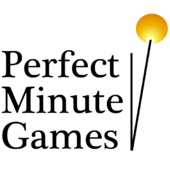quote:
Original post by Geta
What''s a JRobot?
A JRobot is an AI written in Java, up to 10k in size (makes it a bit harder, of course), which fights singly, doubly, and in teams of 8 against other JRobots. The robot has these restrictions:
1) fire once per second, in any direction; missiles, once launched fly at a constant velocity which is NOT relative to the speed of the robot (ie the movement of the JRobot does not affect the movement of the missile)
2) move at one of a range of speeds up to one tenth the max speed of the missiles; cannot turn at speeds above one half the max speed
3) limited acceleration
4) Only sensor is a "scanner" which can be pointed in any direction and can have a width from 1 deg to 21 deg; does not seem to pick up missiles
and as a coder
5) no OOP techniques
quote:
What other problems (decisions) do you want the GA or ANN to solve, would seem to be important to know? Navigation? Power replenishment sources? Target acquisition?
Core Problems:
1) Navigation inside a closed rectangle
2) Target Acquisition (of which speed estimation is a significant part)
3) Dodging incoming fire
I''m thinking that good flocking code could probably handle 1) and 3) together, and my current solution to target acquisition (recent-history-based) should eventually give some results, but it would be interesting to see what a GA/ANN-based solution would make of the problem.
A core problem, however, is that the program is an applet, which makes it difficult to automate the fitness evaluation/breeding process. I suppose I could try reproducing the arena and game classes, but from my readings in A-Life I get the impression that changes in the environment have significant impact on the effectiveness of bred solutions, which brings up the question of how effective encapsulation of breeding ground has been for people.
Thanks,
ld









